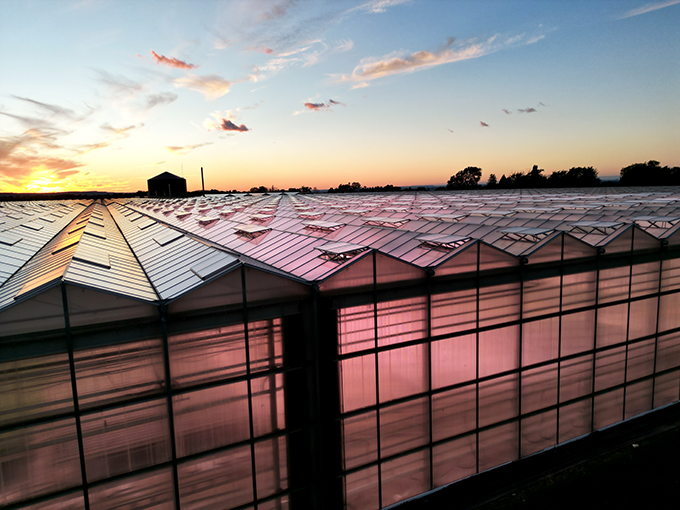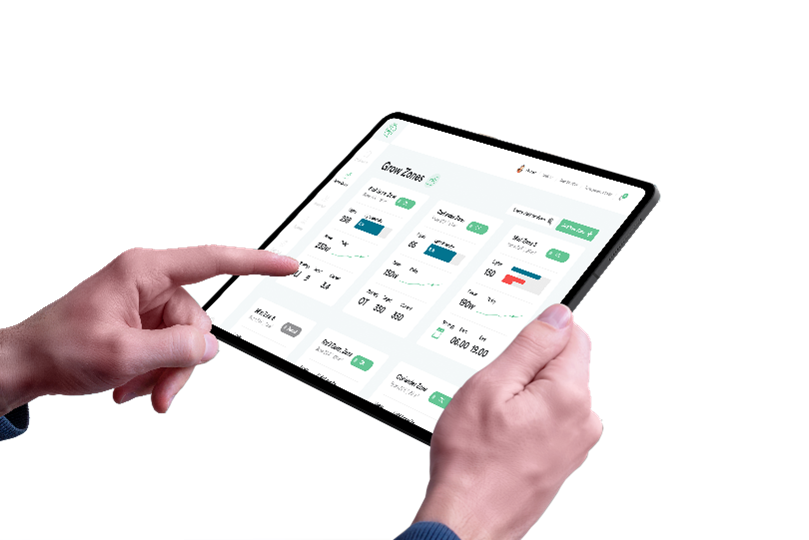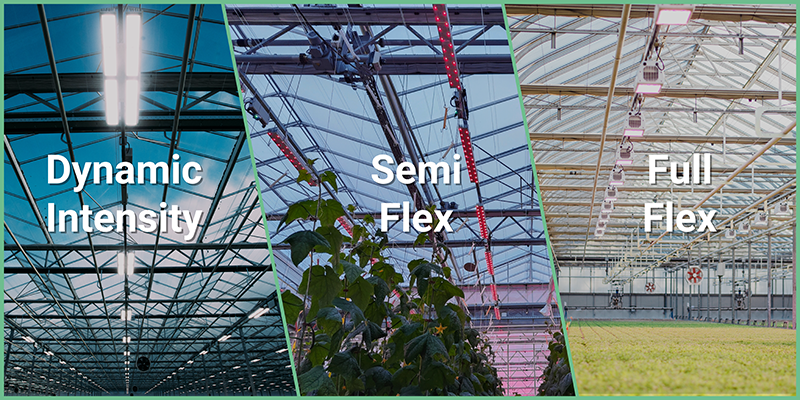Research
Articles
Like tomatoes and cucumbers, peppers are high-light crops, yet they are slower growing, taking approximately 7 to 9 weeks from fruit set to harvest and even longer during low light periods. In fact, production of greenhouse peppers is generally halted in the winter months, when day length and light levels are reduced. While winter light levels have not typically supported profitable greenhouse pepper production, supplementing the light with energy-efficient and cost-effective LED lighting could present a lucrative opportunity for greenhouse growers.
Pepper prices trend higher in winter than in summer when greenhouse produce has competition from field supply. So, winter production could offer greenhouse growers a considerable boost to the bottom line, as long as yield and quality are maintained and lighting costs are managed with intelligent LEDs. When paired with control technologies like helioCORE™, both crop and energy usage can be optimized, ensuring plants get ample light while running the LEDs during hours when utility costs are at their lowest.
Greenhouse Peppers and Light
There is a relationship between the total amount of light your pepper crops receive and their growth. Peppers thrive in a greenhouse environment, which enables you to provide the supplemental light they need – no matter what is happening outside.
Greenhouse peppers generally produce higher quality fruit and better yield than crops grown in the field. Light is a key limiting factor for peppers, and both quality and quantity depend on them getting enough light over a 24-hour period. In a greenhouse, this light is comprised of the natural light that reaches the crops in your facility plus the supplemental light you provide to your plants each day. The sum of the Photosynthetically Active Radiation (PAR) that your plants receive over 24 hours makes up the total Daily Light Integral (DLI). DLI can have an impact on the root and shoot growth of seedlings, influence characteristics like branching, stem thickness, and flower number, as well as speed up or slow down production. It should also be noted that light that falls outside of the PAR range, like far-red, also has an impact on plants.
Peppers produce best under a DLI of 20 moles or higher, and a photoperiod of 16 to 20 hours is recommended. During production, a heavy fruit load is desirable; however, both flowering and fruiting put great demands on plants, and there is a risk of fruit abortion if light needs cannot be met. That is where your supplemental lighting comes in. Supplemental lighting can also reduce the uncertainty and fluctuations of spring DLI.
Plants have different light requirements at each stage of development, and so pepper seedlings require a different DLI. At least 12 moles are recommended for seedlings, and since they are often grown over the winter months, supplemental light is needed to reach that target.
Greenhouse peppers are indeterminate plants, which means they continuously grow new stems and leaves and produce fruit over an extended season, rather than all at once. To ensure maximum fruit production and optimal light reaching the entire plant, peppers need to be pruned regularly. Additionally, planting too densely can result in decreased yield caused by the plants shading each other. In general, crop quality and yield will decline if your peppers are not receiving the light they need.
Greenhouse Peppers and Light Quality
Like tomatoes and cucumbers, peppers also show signs of sensitivity to changes in the quality, or the spectrum, of light they receive. Light quality has been shown to influence both photosynthesis and morphology.
In sole-source testing, peppers have been successfully manipulated by changes to the spectrum. For example, in response to blue light, peppers can have more compact growth and thicker leaves and far-red light can influence taller plant height. No matter your growth goals, the best-LED lighting companies will involve their plant and light specialists to help you optimize the growing conditions at all stages of your greenhouse pepper operation.
A Greenhouse Lighting Strategy Will Help You Get the Most From Your Crops
Our helioCARE™ team of experts can build a customized lighting strategy and accompanying support plan to help you achieve continuous production and quality improvements throughout the growing season. From strategic guidance to on-site support to lighting trials, our team is committed to helping you achieve your ongoing growth goals.
Get in touch with us!
From custom light planning, to tailored quotes, and everything in between,
our team of horticulture experts are always ready to assist.






